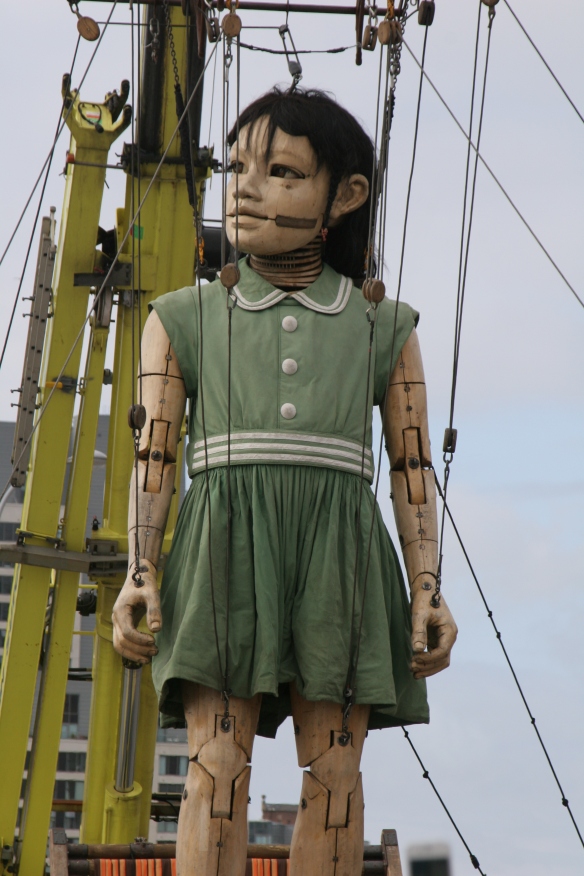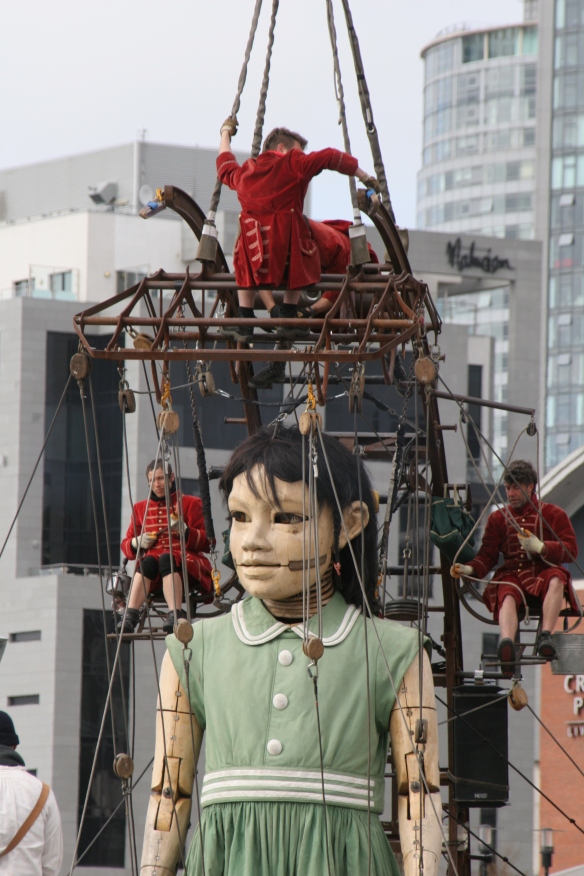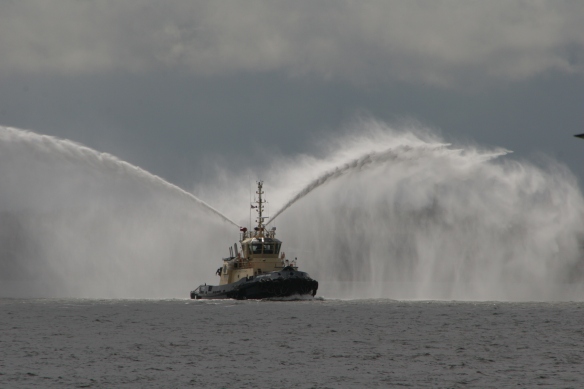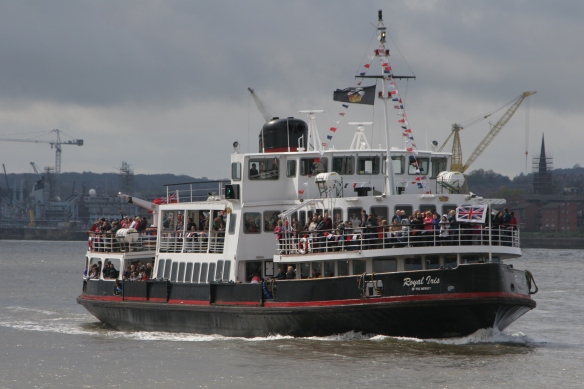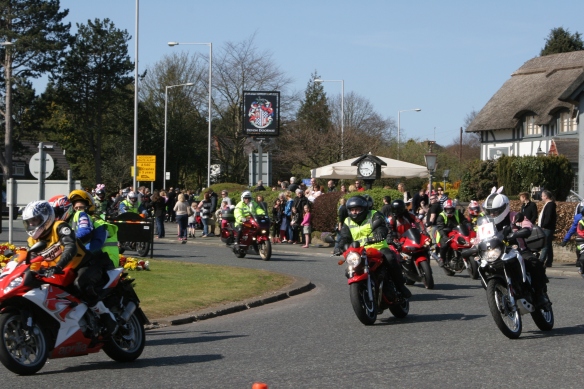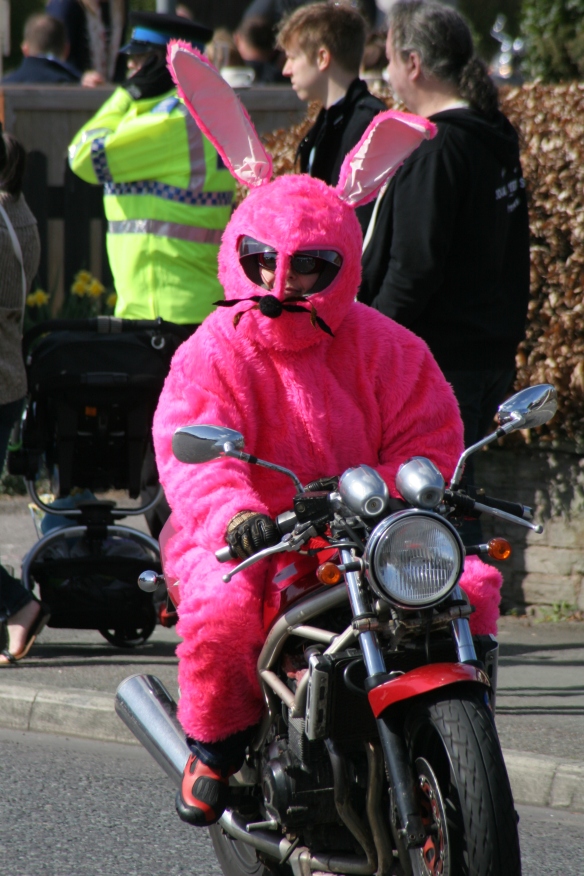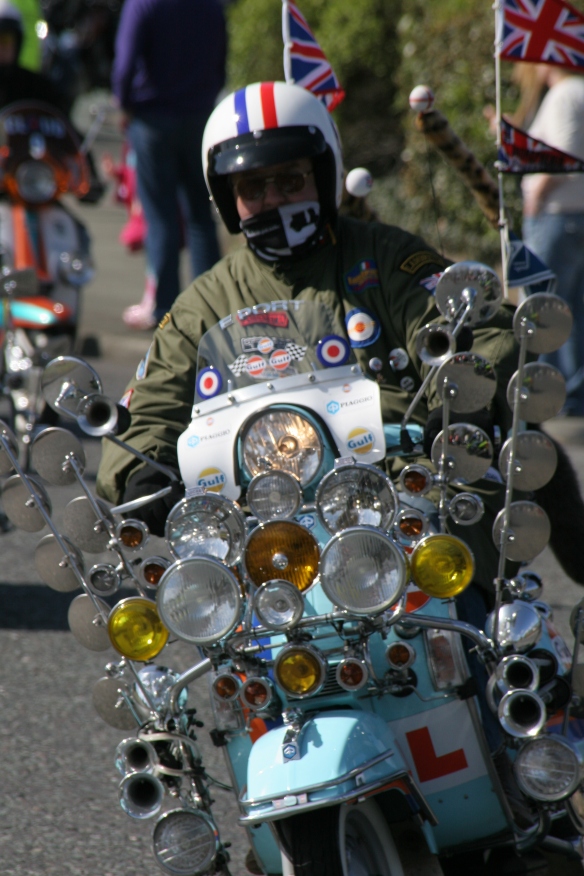Over the weekend of Friday 20th to Sunday 22nd April Liverpool was treated to the ‘Sea Oddysey Giant Spectacular’. Sea Odyssey is a street theatre production where giant marionettes enact a tale of love, loss and reunion played out across the streets and open spaces of North Liverpool, the city centre and the waterfront.
The ‘Sea Oddysey Giant Spectacular’ sees a 30ft giant girl and a 50ft giant man who ‘walk’ around the city on Friday and Saturday before finding each other and meeting up at the Kings Dock in the city’s waterfront on Saturday evening. On Sunday the two giants and the dog walk from the Kings Dock along the water front before getting aboard a boat in Canning Dock to leave the city of Liverpool and go on with their journey.
The little girl giant is accompanied by a papier mache puppet dog called Xolo.
The event’s story has been created by Nantes-based French company Royal de Luxe as part of Liverpool’s commemorations for the recent 100th anniversary of the sinking of the Titanic. Royal De Luxe is a company made up of actors, aerialists, engineers, inventors, technicians, metal-workers and poets, led by Artistic Director Jean-Luc Courcoult. They are recognised across the world for pioneering new forms of street theatre.
The story being re-enanacyed is about a stowaway on the Titanic. A thirty foot tall giant capable of travelling through time, on his way to another continent to meet his daughter, the little giant girl. When the ship hit the iceberg the Giant plummeted 12,000 feet to the ocean floor. When the little giant girl heard the news, she sought out her uncle, the great giant’s brother. The uncle made a decision that was to take him a century to carry out. He made himself a diving suit and he scoured the ocean floor for the shipwreck. When he found the wreck he buried his brother in the deep-sea bed and he found the letter the great giant had written to the little giant girl. He vowed he would return to the little girl giant and he walked across the sea floor pulling the Titanic’s mail trunk to bring back the post to Liverpool.
The Sea Odyssey story was based on a real life letter written by a 10-year-old girl living in Kensington in Liverpool to her father on board the Titanic. May McMurray was just 10 years-old when she wrote her letter to her dad William McMurray who was a first class bedroom steward on the Titanic. He perished without ever seeing the letter when the ship sank on its maiden voyage from Southampton to New York after hitting an iceberg in the North Atlantic Ocean on 15 April 1912. Whilst RMS Titanic was built in Belfast by Harland and Wolfe it was operated by the Liverpool based White Star line and many of the staff and crew came from Liverpool.
For years the family hoped and prayed that one day William would walk through the door like he’d always done before and that by some miracle he’d somehow survived. But his body was never found. The family later donated the moving letter to Merseyside Maritime Museum, where it caught the eye of Jean-Luc Courcoult, founder of France’s Royal de Luxe marionette street theatre company, and became the inspiration for ‘Sea Odyssey’.
The giant puppets were being moved by a team of 110 puppeteers and crane operators, who refer to themselves as Lilliputians, after the race of tiny people in Jonathan Swift’s 18th Century novel Gulliver’s Travels. The giants have previously appeared in Nantes, Berlin, Santiago in Chile and Guadalajara in Mexico before coming to Liverpool.
It was facinating watching lines of the puppeteers jumping off the supporting platform several feet up pulling on the ropes to raise the giants’ feet off the ground in order for them to walk.
The event was estimated to have attracted over 600,000 people over the three days. Many roads in the city were closed along the giant puppets’ route. At every vantage point there were thousands of people standing dozens deep on the route across the city. There were so many people it was hard to get a clear view of the puppets particulalry Xolo the dog who was not as tall as the little girl giant and her uncle.
The giants had lots of surprises. During one part of their walk through the Strand giant cymbals shot confetti and letters from children into the air which fell all around the crowd.
The giant man leapt over Liverpool’s 44ft (13.5m) Chinese arch, the largest outside mainland China.
After walking 23 miles across the city on the final day Sunday 22 April the giant puppets boarded the James Jackson Grundy a Mersey Weaver Steam Packet Coaster which was originally used by ICI on the Mersey and Manchester Ship Canal to transport soda to their works. The boat sailed out from the Canning Dock along to Kings Dock for their final farewell before turning around and heading out towards the sea passing in front of the Albert Dock, Mann Island and the Pierhead.
The working River Mersey tug the Ashgarth gave the giants a watery send off.
The James Jackson Grundy was accompanied by two sailing ships the three masted TS Pelican of London and the sailing brig the Stavros S Niarchos and a flotilla of ships including the river pilot and tug boats.
The Mersey Ferries were running full today with the passengers getting a birds eye view of the giants sailing up the river.
The crowd waved to the giants as they sailed off down the river and out to sea.



